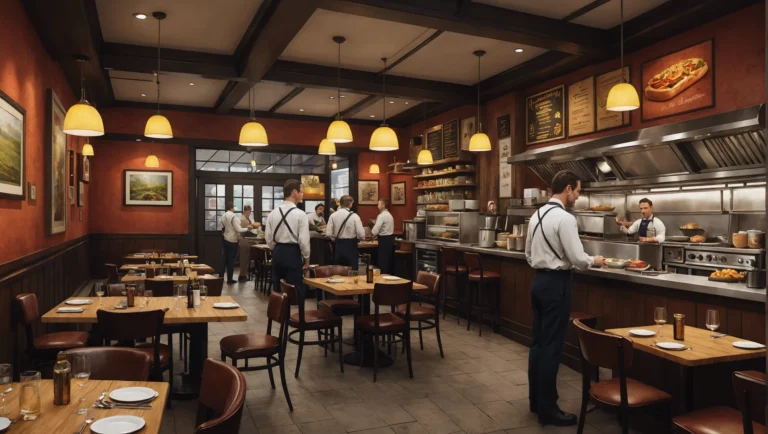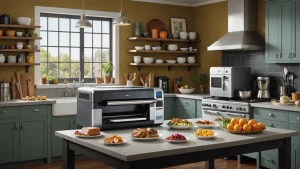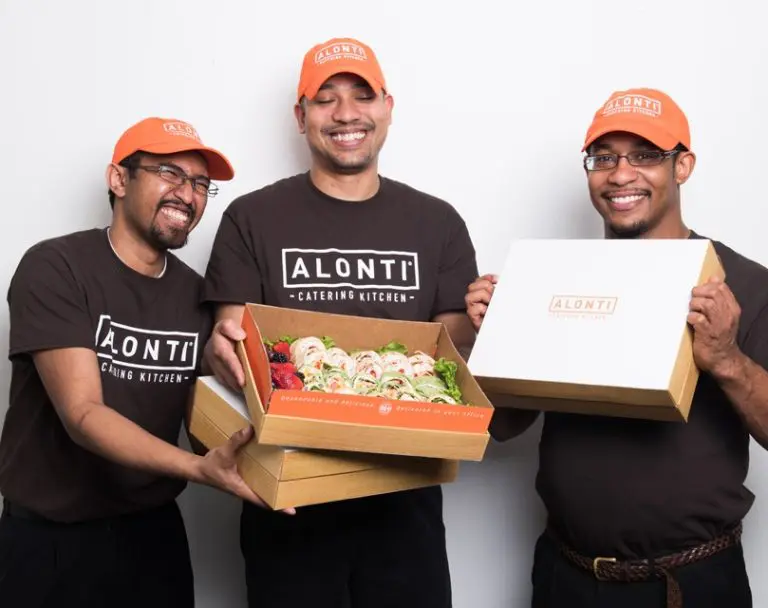In the fast-paced world of the restaurant industry, operational excellence is the key to success.
But what exactly does it take to achieve and maintain peak performance in your restaurant operations?
It’s not just about having the right menu or the perfect location. It’s about implementing proven best practices that optimize efficiency, profitability, and customer satisfaction. Delve into how the front of house operations in a restaurant significantly impact the realization of these objectives, emphasizing the necessary practices and competencies involved.
From establishing clear SOPs to leveraging technology and investing in staff training, there are 15 essential strategies that can take your restaurant operations to the next level in 2024. Delve deeper into understanding how the back-of-house operations in a restaurant directly contribute to optimizing these essential strategies and enhancing overall restaurant performance.
Ready to dive in and discover how to elevate your restaurant’s performance? Let’s get started.

Metrobi has been a game changer for catering industry.
With Metrobi, you can save 23% on delivery costs, save 80% of the time from managing deliveries, and delight your customers with delivery notifications & tracking.
10 Essential Restaurant Management And Best Practices In Restaurant Operations
Establish Clear Standard Operating Procedures (SOPs)
Establishing clear standard operating procedures (SOPs) is the foundation of operational excellence in restaurant management. SOPs provide a roadmap for consistent, high-quality food service, and help ensure that all staff members are on the same page. Moreover, well-crafted SOPs can be instrumental in diminishing unnecessary food wastage, underscoring the role of efficient procedures in minimizing waste.
Happy Customers Drive Efficiency:
47% of restaurants emphasize ensuring product quality and consumer satisfaction for operational excellence.
To create effective SOPs, start by documenting all processes and procedures in detail. This includes everything from opening and closing procedures to food preparation, cleaning, and customer service. Be sure to involve your staff in the process, as they can provide valuable insights and help identify areas for improvement. Implementing comprehensive staff training programs is essential to elevate your restaurant’s customer service. By focusing on developing your team’s skills and knowledge, you’ll foster an environment where exceptional service flourishes. This not only leads to happier customers but also strengthens your restaurant’s reputation. For more detailed strategies, check out our insights on optimizing restaurant customer service through effective staff training.
Once your SOPs are in place, regularly review and update them to ensure they remain relevant and effective. As your own restaurant business evolves and new challenges arise, your SOPs should adapt accordingly.
Implement Effective Inventory Management
Effective inventory management is essential for controlling costs, reducing waste, and ensuring that your restaurant has the necessary ingredients and supplies to meet customer demand. For better control over costs and waste reduction in your establishment, adopt advanced strategies in managing restaurant inventory to ensure you always meet customer expectations efficiently.
Restaurants Prioritize Cost-Cutting for Efficiency:
Nearly 70% of restaurants focus on cost reduction for operational efficiency.
Invest in inventory management software to track stock levels, monitor usage, and generate reports using a report template. This technology can help you identify trends, forecast demand, and make data-driven decisions about ordering and menu planning.
Conduct regular inventory audits to identify discrepancies and ensure that your records are accurate. This can help you detect theft, spoilage, or other issues that may be impacting your bottom line.
Optimize Ordering Processes To Reduce Food Waste And Costs
To optimize your ordering processes, work with your suppliers to establish par levels for each ingredient and supply item. Par levels indicate the minimum quantity of each item that should be on hand at all times, based on your restaurant’s sales volume and menu requirements. To ensure seamless service and kitchen efficiency, understanding the intricacies of operational management in restaurants is key.
By maintaining accurate par levels and tracking usage closely, you can avoid over-ordering and reduce food waste. This not only helps control costs but also minimizes your restaurant’s environmental impact. Optimizing your table turnover rate is another crucial factor in enhancing restaurant efficiency and profitability. By understanding how to effectively manage your seating arrangements and service flow, you can significantly increase the number of guests served while maintaining high satisfaction levels.
Consumers Are Tend To Choose Eco-Conscious Brands:
82% of consumers want brands to support sustainable practices.
Foster a Positive Work Culture
A positive work culture is essential for attracting and retaining top talent, boosting employee morale, and ultimately delivering exceptional guest experiences.
Encourage open communication and feedback among your staff. Regularly solicit input from your team and listen to their ideas and concerns. This not only helps identify areas for improvement but also makes staff feel valued and invested in the restaurant’s success.
Recognize and reward employee achievements, both big and small. Celebrate milestones, such as birthdays and work anniversaries, and acknowledge outstanding performance through incentives, bonuses, or other rewards.
Establish Clear Roles and Responsibilities
Clearly defining each team member’s role is crucial for smooth restaurant operations. Start by creating detailed job descriptions for every position, from servers and cooks to managers and support staff. These descriptions should outline the specific tasks, responsibilities, and expectations associated with each role.
Once roles are defined, communicate them clearly to your restaurant owners and staff. Hold training sessions to ensure everyone understands their duties and how they contribute to the restaurant’s success. Regularly review and update these roles as needed to adapt to changes in your business or industry trends.
Businesses Invest Significant Time in Employee Training:
38% of restaurants spend 4.3 hours per week reporting, tracking, and analyzing training data per store.
Implement Effective Communication Channels
Effective communication is the backbone of smooth restaurant operations. Implement daily pre-shift meetings to relay important information, discuss menu changes, and address any concerns. These meetings provide an opportunity for staff to align their efforts and stay informed about the day to day’s priorities. Explore the inner workings of daily restaurant management by understanding how vital communication underpins effective operations.
Utilize communication tools like messaging apps or digital platforms to facilitate real-time updates and information sharing. This allows staff to quickly adapt to changes in reservations, inventory levels, or other customer preferences and needs. Examples of popular communication tools used in restaurants include Slack, Microsoft Teams, or industry-specific platforms like Toast or UpMenu.
Encourage open and transparent communication among staff members. Foster a culture where employees feel comfortable sharing ideas, concerns, or suggestions for improvement. Regular feedback sessions and an open-door policy can help build trust and promote a positive work environment.
Maintain a Well-Organized Work Environment
A clean and organized work environment is essential for efficient and effective restaurant management and operations. Implement a clean-as-you-go policy, where staff members are responsible for maintaining cleanliness in their respective areas throughout their shifts. This helps prevent clutter, reduces the risk of accidents, and ensures a pleasant dining experience for customers.
Compliance: A Key Driver of Restaurant Efficiency:
To achieve operational excellence, 54% of restaurants prioritize adhering to government regulations.
Assign specific cleaning and organization tasks to each staff management team member. Create checklists or schedules to ensure all areas of the restaurant, from the kitchen to the dining room, are regularly cleaned and well-maintained. This includes tasks like wiping down surfaces, sweeping floors, and restocking supplies.
Conduct regular deep cleaning and maintenance sessions to address areas that require more thorough attention. This may involve professional cleaning services, equipment repairs, or general upkeep of the restaurant’s interior and exterior.
Optimize Inventory Management
Effective inventory management is crucial for controlling costs and ensuring smooth restaurant operations. Implement a robust, inventory control and tracking system that allows you to monitor stock levels, track usage, and identify trends. This can be done using specialized software or even simple spreadsheets.
Regularly conduct physical inventory counts to verify the accuracy of your records. This helps prevent stockouts, reduces waste, and ensures you have the necessary ingredients and supplies to meet customer demand.
Establish par levels for each inventory item based on historical sales data and anticipated demand. Par levels indicate the minimum quantity of an item that should be on hand at all times. When stock falls below the par level, it triggers a reorder to maintain optimal inventory levels.
Streamline Kitchen Processes
The kitchen is the heart of any successful restaurant, and streamlining its processes is essential for smooth operations. Start by optimizing your menu to ensure it is manageable for your kitchen staff and aligns with your restaurant’s concept and target audience. Consider factors like ingredient availability, preparation time, and equipment requirements when designing your menu. Discover how a printer for the kitchen can enhance efficiency by facilitating better communication between the kitchen staff and the front of the house.
Establish standard operating procedures (SOPs) for each menu item to ensure consistency and efficiency in preparation. These SOPs should outline the step-by-step process for preparing each dish, including ingredient measurements, cooking techniques, and plating instructions. Discover the ideal software for managing restaurant operations to streamline your SOP implementation, ensuring every dish meets your high standards of consistency and quality while enhancing overall efficiency.
Stable Operations:
29% of restaurants work on reducing process operations variability to achieve operational excellence.
Implement a kitchen display system (KDS) to streamline communication between the front of house and the kitchen. A KDS allows servers to input orders directly into the system, which then displays them on screens in the kitchen. This reduces the risk of errors, improves order accuracy, and helps kitchen staff prioritize tasks.
Invest in Staff Training and Development
Investing in your staff’s training and development is key to ensuring smooth restaurant operations. Provide comprehensive onboarding and training programs for new hires to ensure they understand their roles, responsibilities, and your restaurant and general manager’s standards and procedures.
Offer ongoing training opportunities to restaurant managers to help staff improve their skills and stay up-to-date with industry trends. This can include workshops, seminars, or online courses covering topics like customer service, food safety, or menu knowledge.
Restaurants Embrace Tech for Employee Development:
19% of restaurants embrace advanced technology for training and developing new and existing employees.
Encourage cross-training among staff members to increase flexibility and adaptability. Cross-trained employees can step in to support other roles during peak periods or staff shortages, ensuring smooth operations even in challenging situations.
Restaurants Turn to Technology for Staff Training:
According to 2023 Restaurant Operations Report conducted by CrunchTime, 53% of restaurants plan to invest in more training technology and programs in the next 12-18 months.

With Metrobi, you can save 23% on delivery costs.
Metrobi provides you with a competitive driver pool, a dedicated operations manager, and included delivery management software. We decrease your overall costs by 23%.
Boost Restaurant Efficiency with These 5 Proven Tips
Streamline Kitchen Operations
Optimizing your kitchen layout is crucial for creating a seamless workflow. Start by analyzing the current layout and identifying areas that can be improved. Consider the flow of food preparation, from receiving ingredients to plating and serving. Minimize the distance between key stations, such as the prep area, cooking line, and expediting station. This will reduce the time and effort required for staff to move around the kitchen, ultimately increasing efficiency.
Maximizing Productivity:
38% of restaurants aim to maximize productivity as a driver for operational excellence.
Investing in high-quality, reliable equipment is another essential aspect of streamlining kitchen operations. Outdated or malfunctioning equipment can lead to delays, inconsistent food quality, and even safety hazards. Assess your current equipment and prioritize replacing or upgrading items that are no longer performing optimally. Look for equipment that offers features designed to improve restaurant operations and efficiency, such as rapid cooking times, easy-to-clean surfaces, and energy-saving capabilities.
Cross-training your kitchen staff is a valuable strategy for improving flexibility and efficiency. By ensuring that each team member is proficient in multiple roles, you can adapt quickly to changes in demand or unexpected absences. Implement a training program that allows staff to rotate through different stations, gaining experience and understanding of the entire kitchen operation. This approach not only enhances efficiency but also fosters a more collaborative and supportive work environment.
Leverage Technology for Improved Efficiency
In today’s fast-paced restaurant industry, technology plays a vital role in boosting efficiency. Implementing a robust point-of-sale (POS) system is a game-changer for streamlining order processing. Look for a POS system that integrates with your kitchen display system (KDS), allowing orders to be automatically sent to the kitchen as soon as they are placed. This eliminates the need for manual order entry and reduces the risk of errors. Additionally, choose a POS system with features like tableside ordering and payment processing to further enhance the customer experience and reduce wait times.
Online ordering and reservation platforms have become increasingly popular among diners. By offering these options, you can tap into a wider customer base and manage orders and reservations more efficiently. Integrate your online ordering system with your POS and KDS to ensure a seamless flow of information. This integration allows orders to be automatically processed and sent to the kitchen, reducing the workload on your front-of-house staff. Similarly, implementing a reservation platform enables you to manage table availability, reduce no-shows, and optimize seating arrangements.
Prioritize Staff Training and Development
Investing in comprehensive onboarding and ongoing training for your staff is essential for driving efficiency and excellence in your restaurant. Start by developing a thorough onboarding program that covers all aspects of the job, from food safety and sanitation to customer service and menu knowledge. Provide hands-on training and assign experienced staff members as mentors to guide new hires through their initial weeks on the job. By setting a strong foundation from the start, you can ensure that your staff is well-prepared and confident in their roles.
Regular ongoing training is equally important for maintaining a high level of efficiency and adapting to evolving industry trends. Schedule training sessions that focus on specific skills, such as upselling techniques, food presentation, or new menu items. Encourage your staff to attend workshops or seminars to expand their knowledge and bring fresh ideas back to the restaurant. By investing in your team’s professional development, you demonstrate your commitment to their growth and foster a culture of continuous improvement.
Analyze Financial Data Regularly
Regularly analyzing your restaurant’s financial data is crucial for maximizing profitability. By monitoring your restaurant’s cash flow and key performance indicators (KPIs) such as food cost percentage and labor cost percentage, you can identify areas for improvement and make informed decisions to optimize your restaurant’s performance.
To get started, set up a system for tracking and analyzing your financial data on a weekly or monthly basis. Use restaurant management software or spreadsheets to input your restaurant sales amount, expenses, and other relevant data. Calculate your food cost percentage by dividing your total food costs by your total food sales, and do the same for labor costs.
Technology Usage For Data Analysis:
25% of restaurants use technology for reporting/tracking/analyzing training data.
Control Food Costs through Smart Menu Design
Your menu is one of the most powerful tools a restaurant owner for controlling food costs and maximizing profitability. By strategically designing your menu, you can encourage customers to order high-margin items while still offering a variety of options to suit different tastes and budgets.
Elevating Your Restaurant to New Heights
By implementing these 15 essential best practices, you’re well on your way to achieving operational excellence in your restaurant. From streamlining kitchen operations and leveraging technology to fostering a positive work culture and prioritizing staff training, these strategies will help you optimize efficiency, profitability, and customer satisfaction.
Remember, the key to success lies in your commitment to continuous improvement. Regularly analyze your restaurant’s financial health and data, seek feedback from your staff and customers, and be open to adapting your processes as needed.
So, what’s the first step you’ll take to elevate your restaurant’s operations? Whether it’s updating your SOPs, investing in new restaurant technology, or revamping your training program, every action brings you closer to your goal.
As you embark on this journey, don’t hesitate to reach out to industry peers, consultants, or resources for guidance and support. The path to operational excellence is a collaborative one, and by working together, we can create a thriving, resilient restaurant industry.
Ready to take your own restaurant marketing up to new heights? Start implementing these best practices today and watch your business soar.





























